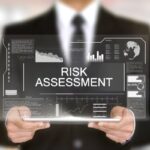Understanding Risk Assessment Frameworks
Cyber risk assessments are crucial for identifying, evaluating, and mitigating risks to an organization’s information assets. A thorough risk assessment helps in understanding vulnerabilities, threats, and the potential impact of cyber incidents, enabling organizations to develop effective security strategies. This blog post provides a detailed guide on how to perform a cyber risk assessment and explores key risk assessment frameworks that can be adopted to enhance your cybersecurity posture.
What is a Cyber Risk Assessment?
A cyber risk assessment is a process used to identify, analyze, and evaluate risks associated with an organization’s information systems. The goal is to understand the potential threats, vulnerabilities, and impacts of cyber incidents, and to prioritize mitigation efforts based on the level of risk.
Steps to Perform a Cyber Risk Assessment
Define the Scope
The first step in conducting a cyber risk assessment is to define the scope. This involves identifying the assets, systems, processes, and data that need to be assessed. Clearly defining the scope ensures that the assessment is focused and comprehensive.
Identify Assets
Next, create an inventory of all critical assets within the scope. These can include hardware, software, data, and other valuable resources. Understanding what assets need protection is fundamental to assessing risks accurately.
Identify Threats
Identify potential threats that could exploit vulnerabilities in your assets. Threats can be internal or external and can include cyber-attacks, natural disasters, human error, and system failures.
Identify Vulnerabilities
Assess the vulnerabilities associated with each asset. Vulnerabilities are weaknesses that could be exploited by threats to cause harm. This can include software flaws, weak passwords, lack of encryption, or unpatched systems.
Evaluate Risk
Evaluate the risk by considering the likelihood of each threat exploiting a vulnerability and the potential impact on the organization. This step often involves qualitative or quantitative analysis to prioritize risks.
Implement Mitigation Strategies
Based on the risk evaluation, develop and implement mitigation strategies to reduce the identified risks. This can include technical controls, policies, procedures, and training programs.
Monitor and Review
Cyber risk assessments are not one-time activities. Continuously monitor and review the risk environment and the effectiveness of your mitigation strategies. Regular updates ensure that new threats and vulnerabilities are addressed promptly.
Risk Assessment Frameworks
Several frameworks can guide organizations in performing comprehensive cyber risk assessments. Here are some widely recognized frameworks:
NIST Cybersecurity Framework (CSF)
The NIST Cybersecurity Framework is a voluntary framework that provides guidelines for organizations to manage and reduce cybersecurity risks. It consists of five core functions: Identify, Protect, Detect, Respond, and Recover. Each function includes categories and subcategories that help organizations build a robust cybersecurity posture.
ISO/IEC 27001
ISO/IEC 27001 is an international standard for information security management systems (ISMS). It provides a systematic approach to managing sensitive company information, ensuring its security through a risk management process. Organizations can become certified to ISO/IEC 27001 to demonstrate their commitment to information security.
FAIR (Factor Analysis of Information Risk)
The FAIR framework is a quantitative risk management model that helps organizations understand, analyze, and measure information risk. FAIR provides a methodology to quantify risk in financial terms, enabling better decision-making and resource allocation.
4. OCTAVE (Operationally Critical Threat, Asset, and Vulnerability Evaluation)
OCTAVE is a framework for identifying and managing information security risks. It focuses on organizational risk and strategic, rather than technical, aspects of information security. OCTAVE helps organizations assess their risks, plan mitigation strategies, and develop security policies.
Choosing the Right Framework
Choosing the right framework depends on various factors, including the organization’s size, industry, regulatory requirements, and specific cybersecurity goals. Each framework has its strengths and can be tailored to meet the unique needs of the organization.
Considerations for Selection
- Regulatory Compliance: Ensure that the chosen framework aligns with industry-specific regulatory requirements.
- Organizational Size and Complexity: Larger and more complex organizations may require more comprehensive frameworks like NIST CSF or ISO/IEC 27001.
- Resource Availability: Consider the resources available, including budget, personnel, and technology, to implement and maintain the framework.
- Risk Management Goals: Align the framework with the organization’s risk management objectives and priorities.
Performing a cyber risk assessment is a critical component of an effective cybersecurity strategy. By identifying and evaluating risks, organizations can implement appropriate mitigation measures to protect their assets. Understanding and leveraging risk assessment frameworks like NIST CSF, ISO/IEC 27001, FAIR, and OCTAVE can provide a structured approach to managing cyber risks. By continuously monitoring and updating their risk assessments, organizations can stay ahead of emerging threats and maintain a robust cybersecurity posture.



